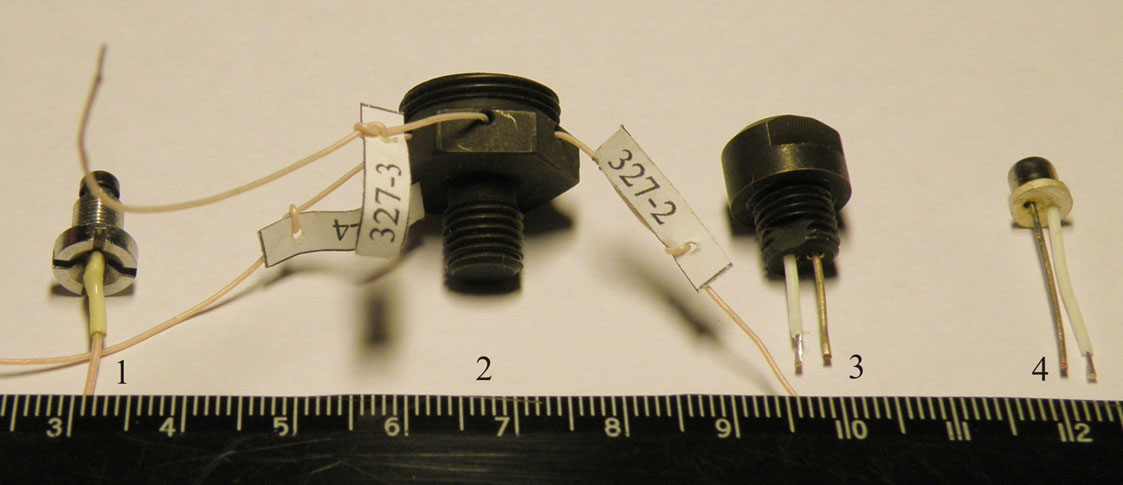The size effects in the structures based on silicon carbide
Conditions for creation of light emitting diodes working in electrical breakdown regime have been determined. The floatable technology have been used. Light emitting diodes obtained is possible to use as standards of power and spectral composition of radiation, and although for creation of sources of short light impulses. Constructions of these devices, laboratorial technology of their fabrication, elements of metrological support have been worked out.
Emitters on SiC-basis operating in the electrical breakdown regime have the following superior characteristics:
a wide spectrum which is similar to the blackbody spectrum at 6000-8000 K in the range of 250 - 700 nm;
• extremely high temperature stability, so there is no need for thermostatting (the temperature coefficient of spectral density of the breakdown electroluminescence quantum yield is within the range of 0.01-0.1 % / K );
• linear dependence of the emission power on the feed current, when the current is growing up by a factor of 104;
• resistance to the density of the electric current up to10 6 A/cm 2;
• subnanosecond quick operating;
• great brightness of the emitting band ( up to 104 Kd/m2 );
• ability to function under extreme high-temperature and high-radiation conditions;
• long term chemical stability;
• quantum radiation yield of the order of 10 - 6 photon/electron;
• weak degradation;
• rather small sizes.
Due to high temperature stability heating of p-n-structures by the feed current hardly affects the emission quantum yield. It causes the instantaneous readiness of a device to operate and stipulates its pulse regime efficiency. It also allows to perform commutation and change of emission power by the feed current that seems to be the most convenient and the simplest.

| Attachment | Size |
|---|---|
| 285.3 KB |




